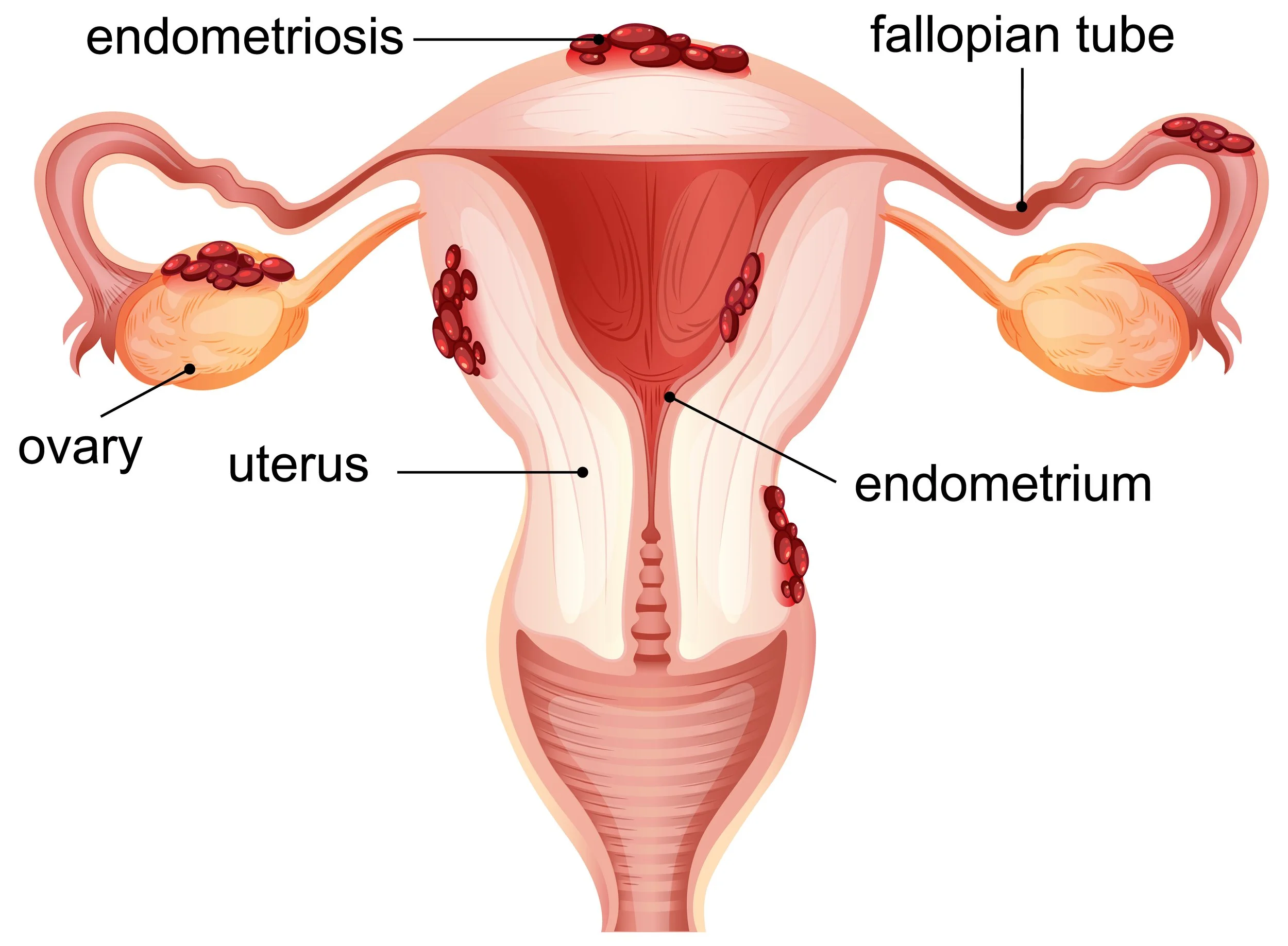Endometriosis: What It Is and Why Your Pain Deserves to Be Taken Seriously
Introduction
Endometriosis is more than “just bad cramps.” It's a chronic condition that affects at least 1 in 10 women, yet many go undiagnosed or unheard for years. If you’ve ever felt dismissed or confused about your pelvic pain, you are not alone. Understanding what’s happening in your body is the first step toward getting real answers and support.
What Is Endometriosis?
Endometriosis
Endometriosis occurs when tissue similar to the lining of the uterus (called the endometrium) grows outside the uterus. Unlike your normal endometrial lining, which sheds during your period, these rogue cells have nowhere to go. They still respond to your monthly hormones, thickening, breaking down, and bleeding, which leads to inflammation, scarring, and often, intense pain.
These growths are most commonly found on the ovaries, fallopian tubes, outer surface of the uterus, and pelvic cavity, but they can also appear in places like the bladder, bowel, and even the diaphragm in rare cases.
Common Symptoms of Endometriosis
Symptoms can vary widely, but many people experience:
Severe period cramps that impact your daily life
Pain with sex
Chronic pelvic pain
Pain with bowel movements or urination
Bloating
Fatigue
Difficulty getting pregnant
Not everyone with endometriosis has painful periods and not everyone with painful periods has endometriosis. That’s why a thorough evaluation matters.
What Causes It?
The exact cause is still unknown, but theories include:
Retrograde menstruation: menstrual blood flows backward into the pelvic cavity
Immune dysfunction: the body doesn’t clear abnormal cells properly
Genetics: it can run in families
Hormonal imbalances: estrogen dominance may play a role
How Is It Treated?
There’s no cure for endometriosis, but treatment options include:
Hormonal therapy: birth control, progestins, or GnRH (Gonadotropin-releasing hormone) agonists to reduce symptoms
Pain management: NSAIDs and nerve pain medications
Surgical removal of endometrial lesions: Typical done by a specialist
Lifestyle approaches: anti-inflammatory diets, pelvic floor therapy, acupuncture, meditation and yoga to aid with stress and pain
Every person is different, what works for one may not work for another. The key is working with someone who listens and takes your symptoms seriously.
You’re Not Alone
If you’re dealing with pain that feels “worse than normal,” trust your instincts. Endometriosis is real, and your pain is valid. At Blush Women’s Health Consulting, we’re here to support you with knowledge, advocacy, and tools to navigate your journey.


